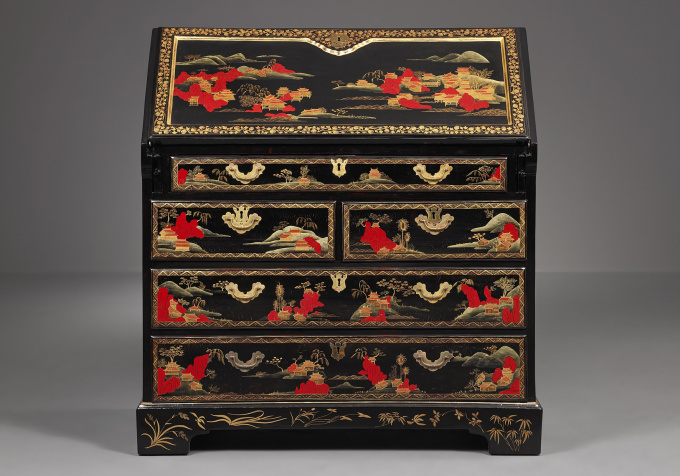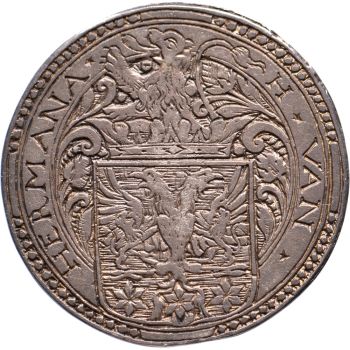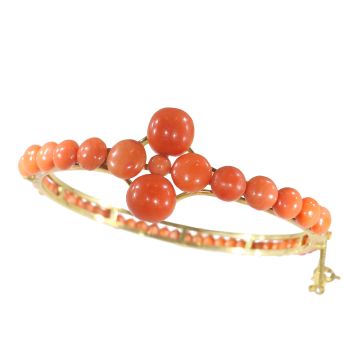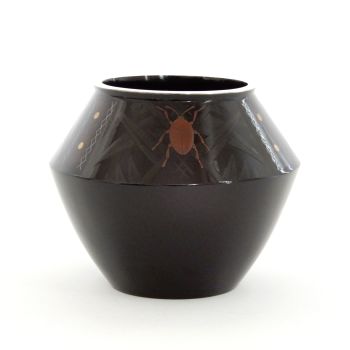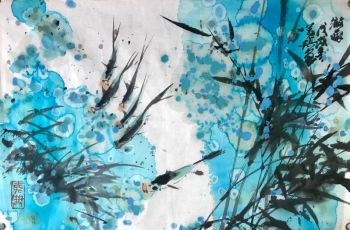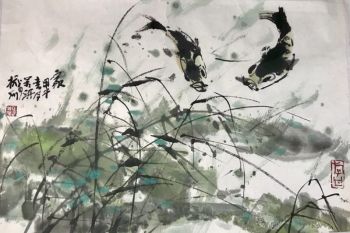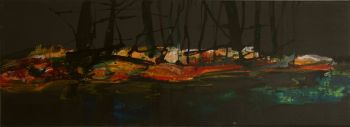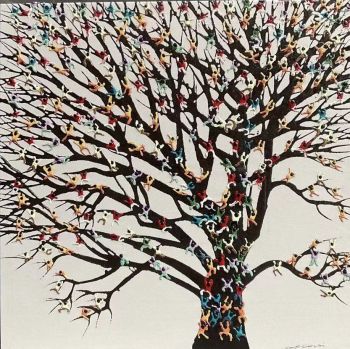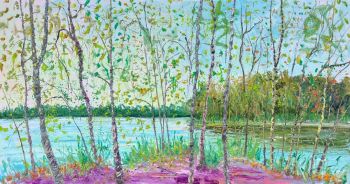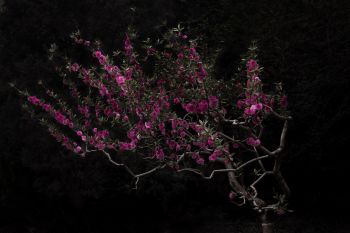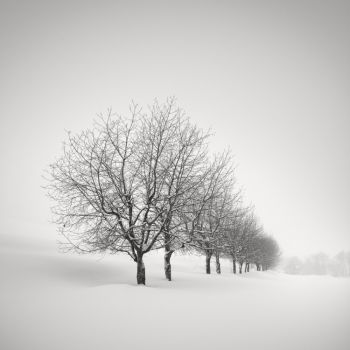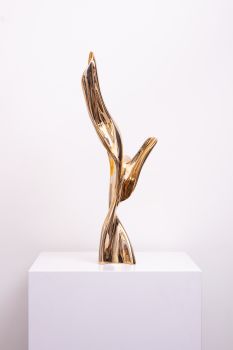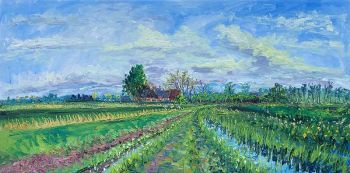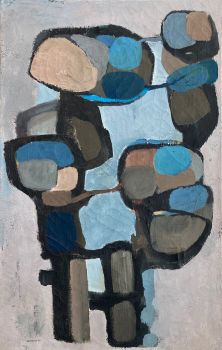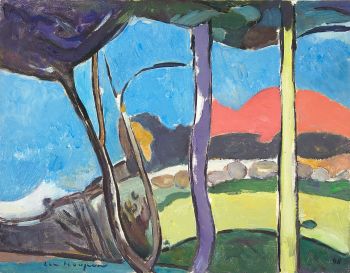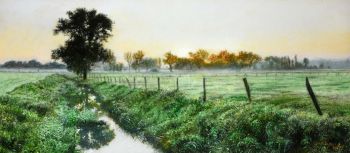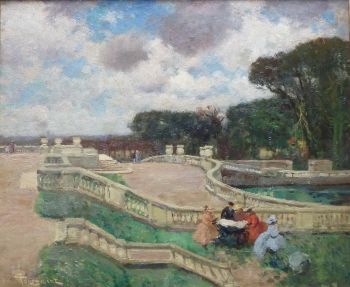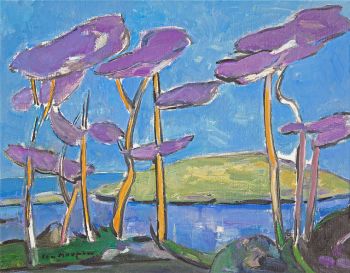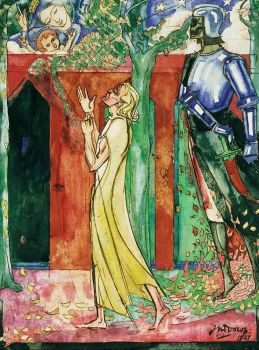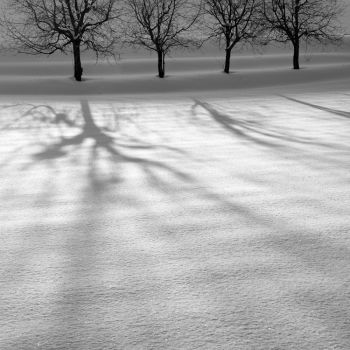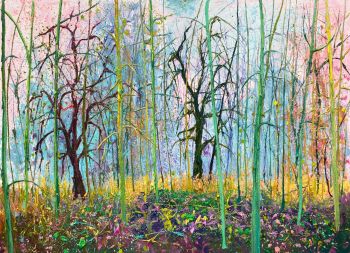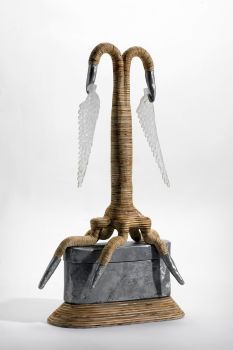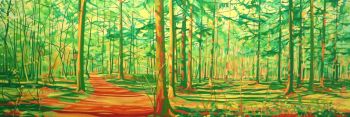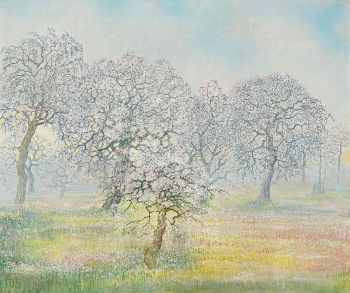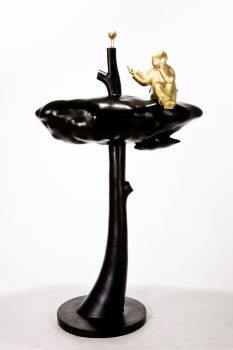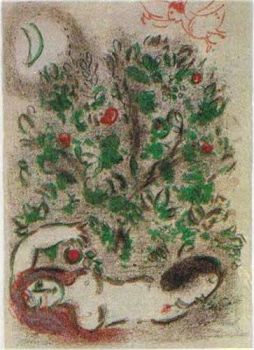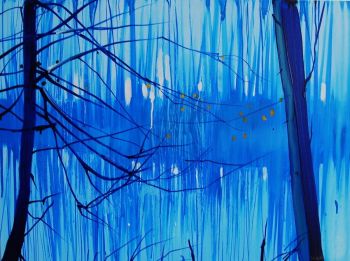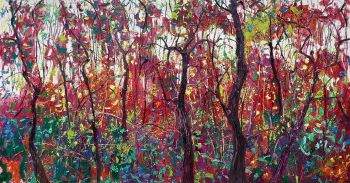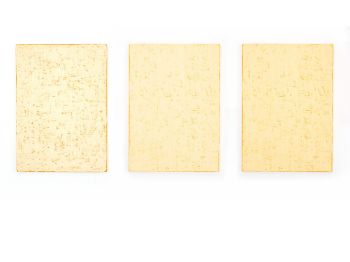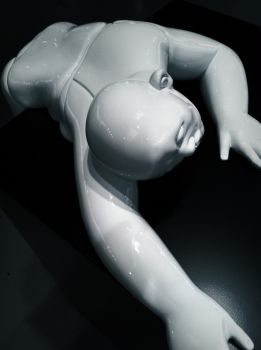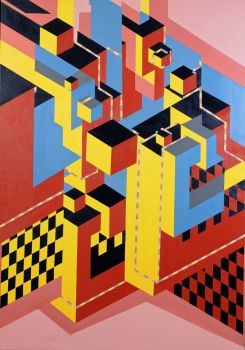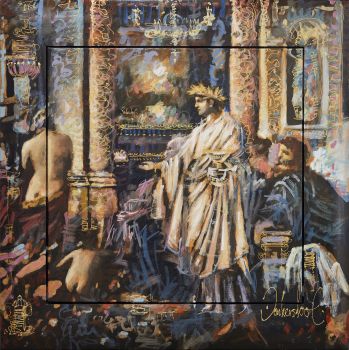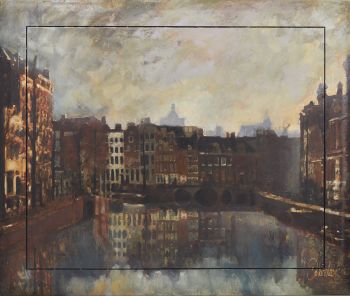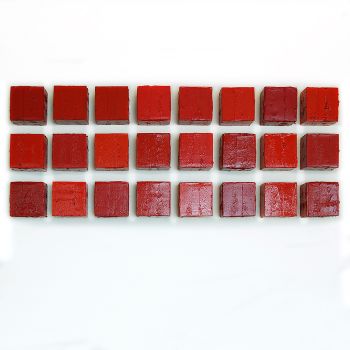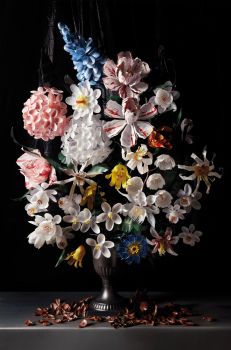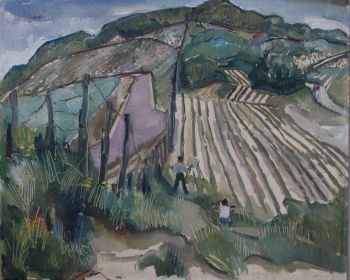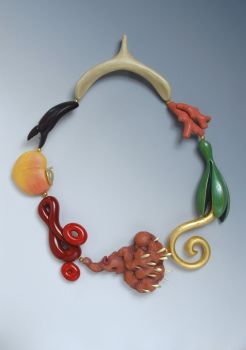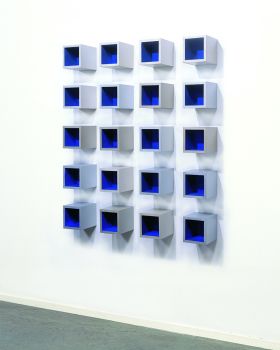Secretária Laquered Chinesa para o Mercado Europeu 1740
Artista Desconhecido
MadeiraLaca chinesaLaca
107 ⨯ 100 ⨯ 61 cm
Atualmente indisponível via Gallerease
- Sobre arteA bureau or writing desk of Chinese lacquer presented here. It clearly is shaped after an English model of the same shape and dimensions, to be dated c. 1735-45. The lower part stands on a rectangular base, with four flat corner-feet, and is divided in four sections: below are two large drawers above each other, then there is a third section with two smaller drawers and on top a low drawer which is less wide. The upper part has a reclining fall-front which opens to function as a writing top, supported by two ledgers that can be pulled out. When lowered, it reveals a section with three reclining drawers on the left- and right-hand sides, separated by three compartments, each with a deep drawer below. These compartments are divided by two narrow panels, shaped as columns, that can be opened to the empty space behind. The top is flat; the drawers have shaped paktong handles.
The bureau is beautifully lacquered in shades of gold and partly with cinnabar red on a black lacquered ground. The five lower drawers, the outside of the fall-front, the flat top and the two sides show a river landscape with hills on the background, the rocky shores with houses, pavilions and trees. The large rock formations are detailed in low relief with cinnabar red lacquer, which gives the scenes a dramatic effect and certainly adds to the visual complexity of the landscapes.
The landscapes on the drawers are surrounded by narrow bands with a zig-zag pattern in gold; the fall front and the sides have bands with a continuing leaf- and flowerhead (or fruit) spray while the flat top has a narrow decorative band of a twisted cord.
The composing parts behind the fall front, the back of that flap and the three sides of the base are decorated with sprays of different plants and flowers, including bamboo, orchids, prunus and arrow-head, rendered as separate motifs in gold lacquer scattered over the surface.
The back of the bureau is lacquered black, without any decoration - it clearly was meant to be placed against the wall.
Apart from the fact that large pieces of Chinese lacquered furniture from this period are rare, the lacquered decoration of the bureau has some interesting features. First of all, the lavish use of cinnabar lacquer is very unusual, because this substance was expensive and was mostly used for smaller objects, mainly boxes or dishes for the domestic Chinese market. It is quite rare to see it on a piece of export lacquer.
Even more interesting are the stylistic features that are borrowed directly from decorations on Japanese lacquer, namely the zig-zag motif in the bordering bands of the lower drawers and the scattered flower motifs in gold. It is not difficult to point to many Japanese examples with such decorative motifs and therefore the question rises if this bureau is not only imitating an English model, but also tries to give a 'Japanese' impression. - Sobre artista
Pode acontecer que um artista ou criador seja desconhecido.
Algumas obras não devem ser determinadas por quem são feitas ou são feitas por (um grupo de) artesãos. Exemplos são estátuas dos tempos antigos, móveis, espelhos ou assinaturas que não são claras ou legíveis, mas também algumas obras não são assinadas.
Além disso, você pode encontrar a seguinte descrição:
•"Atribuído a …." Na opinião deles, provavelmente uma obra do artista, pelo menos em parte
• “Estúdio de…” ou “Oficina de” Em sua opinião um trabalho executado no estúdio ou oficina do artista, possivelmente sob sua supervisão
• "Círculo de ..." Na opinião deles, uma obra da época do artista mostrando sua influência, intimamente associada ao artista, mas não necessariamente seu aluno
•“Estilo de…” ou “Seguidor de…” Na opinião deles, um trabalho executado no estilo do artista, mas não necessariamente por um aluno; pode ser contemporâneo ou quase contemporâneo
• "Maneira de ..." Na opinião deles, uma obra no estilo do artista, mas de data posterior
•"Depois …." Na opinião deles uma cópia (de qualquer data) de uma obra do artista
• “Assinado…”, “Datado…” ou “Inscrito” Na opinião deles, a obra foi assinada/datada/inscrita pelo artista. A adição de um ponto de interrogação indica um elemento de dúvida
• "Com assinatura ….”, “Com data ….”, “Com inscrição ….” ou “Tem assinatura/data/inscrição” na opinião deles a assinatura/data/inscrição foi adicionada por outra pessoa que não o artista
Artwork details
Related artworks
Artista Desconhecido
Japanese art deco lacquervase with Scarab beetle motif1920 - 1950
Preço em pedidoDille Art
1 - 4 / 12- 1 - 4 / 6
Artista Desconhecido
The Stamford Raffles Secretaires.1800 - 1813
Preço em pedidoZebregs & Röell - Fine Art - Antiques
Artista Desconhecido
UM MODELO JAPONÊS DE UM NORIMONO, UM PALANQUIM1650 - 1700
Preço em pedidoZebregs & Röell - Fine Art - Antiques
1 - 4 / 24- 1 - 4 / 24
Artista Desconhecido
Japanese art deco lacquervase with Scarab beetle motif1920 - 1950
Preço em pedidoDille Art
Artista Desconhecido
Ícone de madeira monumental: São Nicolau de Mozaisk1600 - 1650
Preço em pedidoKunsthandel H.W.C. Dullaert Icons
1 - 4 / 24

